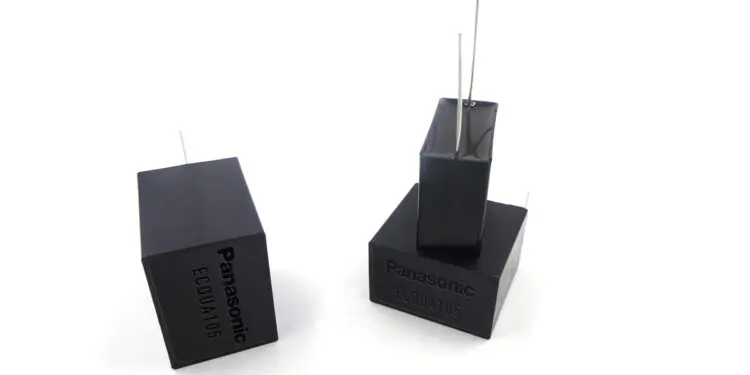Panasonic has expanded voltage range of AEC-Q200 qualified ECQUA (Safety Class X2, for automotive) series to 310VAC.
This metallized polypropylene film capacitor series from Panasonic Industry Europe benefits from original in-house patterned metallization process with fuse mechanism function by Panasonic. This unique technology delivers stable capacitance level over the product lifetime and therefore guarantees a higher reliability of the application.
This series features now a rated voltage range of 275VAC up to 310 VAC, and a nominal capacitance range of 0.1µF up to 10µF. Operating temperature range is from -40°C up to 110°C. A flame-retardant plastic case and non-combustible resin are utilized leading to accreditation in accordance with UL/CSA and European safety regulation for class X2. All the products are fully RoHS and REACH compliant.
ECQUA series (for Automotive) capacitors offer a guaranteed high humidity resistance (THB test: 85°C, 85%, 240VAC for 1000 hours with 275VAC rated products and 275VAC for 1000 hours with 310VAC rated products) and high thermal shock resistance (-40°C up to 85°C, 1000 cycles).
Functioning as interference suppression capacitors, ECQUA series is ideal for a broad spectrum of applications including input / output filtering for charging stations or the input side of On-Board chargers, industrial power supplies, the range of EV / PHEV applications and renewable energy infrastructure.































